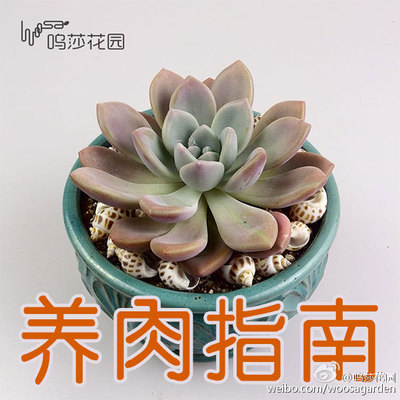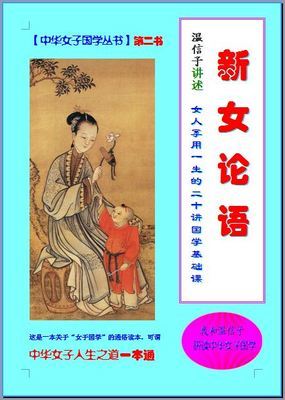一、文章背景知识:
下面的文章节选自一本关于二十世纪艺术发展的书。这里作者提到了世纪之交出现的一种现代艺术。许多人发现这种艺术令人震惊。在这篇文章里作者首先从两种艺术形式的区别和联系讲起,接着分析了这种新艺术形式对大多数人来说意味着什么以及大众是否能接受这种艺术表现形式。
二、文章讲解:
1.对关键生词、复杂句的理解与把握。(如每段的首尾句,信息量丰富的复杂句等。)
2.对重点信息的提取和加工。(比如每一段的大意或者每个主要事件的基本发展过程。)
3.归纳总结文章主旨和每段大意。(综合每段段落大意推出文章主旨。)
第一段:
第一句:If the new art is not accessible to everyone, whichcertainly seems to be the case, this implies that its impulses arenot of a generically human kind.
Accessible:可以进入的;容易理解的;好相处的;能接近的,容易会见的
Imply:暗示,暗指
Impulse:冲动;含蓄,包含;含有…的意思
Be of +n.:相当于后面名词的形容词。
这句话大家只要理解了which引导的从句是什么意思就可以了。英语里用从句并以逗号隔开,其实就相当与我们中文的一个括号,意思是事实似乎如此。这句剩余的部分比较简单。
第二句:It is an art not for people in general but for aspecial class who may not be better but who are evidentlydifferent.
in general:一般说来
class:阶级;社会等级;.(高低、优劣的)等级;类别
who 引导的定语从句用来形容前面的a special class,他们或许不是最优秀的,但是他们显著是与众不同的。
归纳总结:本段讲了一种新型的艺术形式,一种阳春白雪式的艺术,仅为满足一小部分特殊观众的审美偏好。
第二段:
第一句:Before we go further, one point must beclarified.
Clarify:说明,讲清楚,阐明
第二句:What is it that the majority of people call aestheticpleasure?
Aesthetic:审美的
第三句:What happens in their minds when they "like" a workof art; for example, a play?
Work:著作;(艺术)作品;〔pl.〕著作集
当他们“喜欢”一件艺术品时(比如:一个戏剧)他们的脑袋里发生了什么?
第四句:The answer is easy.
第五句:They like a play when they become interested inthe human destinies that are represented, when the love andhatred, the joys and sorrows of the dramatic personages so movethem that they participate in it all as though it were happening inreal life.
Destiny:命运,天数,定数
Represent:上演(戏等);扮演(某角色)
Hatred:仇恨,憎恨,憎恶,敌意,恶意
Sorrow:悲哀,悲痛,伤心;忧伤,哀悼;悲叹;悔恨,惋惜,遗憾,抱歉
Dramatic:戏剧的,剧本的;演剧的
Personage:人,个人;名士,显贵
Move:感动,鼓动,激动;使感动得… ;引起(人)…的兴致,打动,发动;刺激,鼓励
Participate:参与,参加,有关系;分担;共享
as though:似乎,好像
这句话比较长,是典型的长难句。我们一点一点的分析。他们喜欢一出戏剧,(两个when引导两个并列的从句),第一句是说当他们对剧中在所扮演的人物的命运感兴趣时;第二句是说,当主人公的爱与恨、欢与悲深深地打动了他们以至于使他们认为是发生在现实社会的一样。
第六句:And they call a work ”good" if it succeeds increating the illusion necessary to make the imaginary personagesappear like living persons.
Illusion:幻影;幻觉;妄想,幻想;错觉
Imaginary:想像中的,假想的
他们就会认为一部作品“出色”,如果作品成功地创造出幻象使虚构的主人公好像是活生生的人一样。这是英语的语序,换成中文的,就把前后两句的顺序倒过来。
第七句:In poetry the majority of people seek the passion andpain of the human being behind the poet.
Poetry:诗,诗歌,韵文;诗集
在诗作中,大多数人在寻找隐藏在诗人背后的人类激情和痛苦。
第八句:Paintings attract them if they find in them figuresof men or women it would be interesting to meet.
这里第一个them和第一个they指的是大众,第二个them指的是Paintings。It作形式主语。
在绘画中,如果他们能发现引起他们兴趣的男人或者女人形象,这些绘画就能够吸引他们。
归纳总结:这一段为后文的分析做准备,作者阐明了美学快感到底是什么并解释了观众为什么“喜欢”这件艺术品。是由于观众和艺术所展现出来的人物命运产生和共鸣。虚幻的艺术人物是如此的真实以至于观众都深陷其中了。
第三段:
第一句:It thus appears that to the majority of peopleaesthetic pleasure means a state of mind that is essentiallyindistinguishable from their ordinary behavior.
Essential:本质的;实质上的,实在的
Indistinguishable:难区别的,不能辨别的
似乎对于大多数人来说美学快感意味着一种精神状态,这种精神状态本质上不能够和他们的日常行为区分开来。
第二句:It differs merely in accidental qualities, beingperhaps less utilitarian, more intense, and free from painfulconsequences.
Merely:单;只;纯粹;全然
Accidental:偶然的,不测的;意外的
Utilitarian: 功利的;实利的
Intense:激烈的,强烈的;紧张的;热烈的,热情的,认真的
它仅仅是偶然属性的不同,可能功利性不那么强,但是程度却更强烈,而且没有痛苦的后果。
第三句:But the object toward which their attention and,consequently, all their other mental activities are directed
Consequently:作为结果的,理所当然的
这句话的主干是But the object is the same as in daily life: people andpassions.意思是说,但是这些客观事物和现实中的一样,都是人物和激情。划线部分是一个变换了语序的定语从句。正常的顺序是theirattention and, consequently, all their other mental activities aredirected towardwhich,which引导修饰object。他们所有的注意力和其他的一切的精神活动都关注的object。
第四句:When forced to consider artistic forms proper--forexample, in some surrealistic or abstract art--most people willonly tolerate them if they do not interfere with their perceptionof human forms and fates.
Surrealistic:超现实主义
Abstract:.抽象的
Interfere:(利害、要求等)抵触,冲突 (with)
Perception:感觉(作用);感受;知觉
Fate:命运,宿命
如果要勉强认为艺术形式合理——比如在一些超现实或抽象艺术中——大多数人只在它们不干扰自己对人类形式和命运的认识时才会容忍它们。
第五句:As soon as purely aesthetic elementspredominate and the story of John and Susie growselusive, most people feel out of their depth and are at a lossas to what to make of the scene, the book, or the painting.
Element:要素;成分;(构成)部分;分子
Predominate:统治;居支配地位,(数量上)占优势
Elusive:闪避的,逃避的
Fell out :摸清(某人的想法)
at a loss:不知所措
这句话purely aesthetic elements predominate和the story ofJohn and Susie grows elusive,都是As soonas的并列成分。第一个指纯美学元素成为主流;第二个指John andSusie的故事变得晦涩,大多数人都会感到困惑,于场景、书籍和绘画前不知所措。
第六句:A work of art vanishes from sight for a beholder whoseeks in that work of art nothing but the moving fate of John andSusie or Tristan and Isolde.
Vanish:消失不见;消灭,消散
nothing but:只不过
Beholder:观看者
一件艺术品在它的观赏者眼中黯然失色了,who引导的从句修饰beholder,这些观赏者在艺术品中寻求无外乎John 、Susie、Tristan 或者solde的变化的命运。
第七句:Unaccustomed to behaving in any mode except thepractical one in which feelings are aroused and emotionalinvolvement ensues, most people are unsure how to respond to awork that does not invite sentimental intervention.
Unaccustomed:不习惯…的
Involvement:包缠,缠绕;包含

Ensue:跟着发生
respond to:对…作出反应
sentimental:感情的;情绪的;情操的
intervention:插进,介入;调解,排解;干涉,干预,妨碍
这句话的主句是most people areunsure,划线部分作伴随状语从句。意思是说这些人,不习惯于按照实用模式以外的模式做事,而在这种实用模式中感觉被激起,情感上的牵连接踵而至。然后是主句,绝大部分人不确信如何回应不能引起情绪介入的艺术作品。
归纳总结:本段比较了美学快感所揭示的精神状态和日常行为之间的区别和联系。艺术也是生活的一部分,艺术虽然高于生活但却不能超脱于生活。艺术唯有和现实的生活相联系而迸发才能展现艺术的真谛。
第四段:
第一句:Now this is a point that has to be made perfectlyclear.
现在这是一个必须完全说清楚的要点。
第二句:Neither grieving nor rejoicing at such humandestinies as those presented by a work of art begins to define trueartistic pleasure; indeed, preoccupation with the human content ofthe work is in principle incompatible with aesthetic enjoymentproper.
Grieve:使悲伤,使忧伤,使痛心
Rejoice:欢喜,高兴;快乐,欢乐
Preoccupation:先占据,先取;偏见,成见;专心,全神贯注;出神
Incompatible:不相容的,难两立的,矛盾的
这句话的主句是:Neither grieving nor rejoicing begins to define trueartisticpleasure。前半句讲,不是对于这些艺术作品里所表现的人物命运的悲或喜最初定义了真正的艺术给人带来的快感;后半句解释原因,原因是什么呢?的确,对艺术品的人文内容的关注在原则上与美学享受不协调。
归纳总结:但是最后作者也指出艺术于美学毕竟是相比较有差异而存在的,艺术的诉求与美学的追求是一定程度上不协调的。
 爱华网
爱华网



